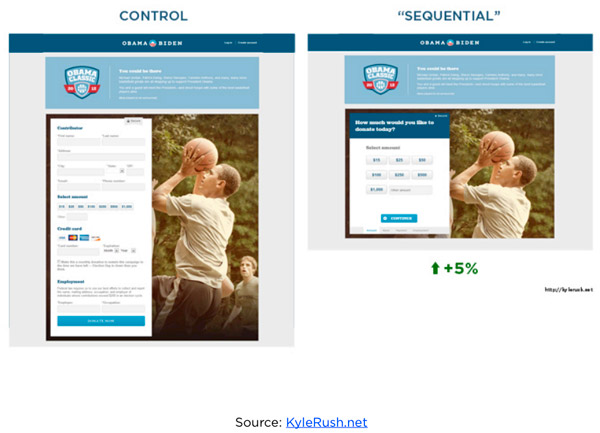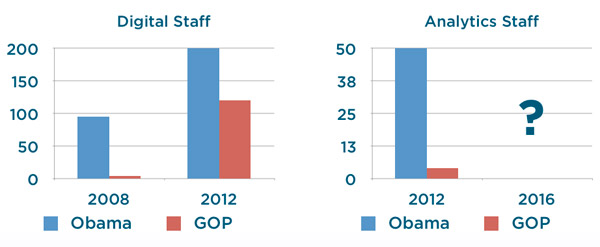If you want a deep but concise look into the Obama campaign and its online operations, this report (PDF) by Engage Research has a lot of good information, much of it about the very sophisticated means the campaign used to craft very simple messages. Some takeaways:

Translated: "Got more money by asking people to sign up first, then immediately skipping those people to a donation page vs. landing on donation page." It's a soft sell: get people to commit to donating, then to paying. It's not as intimidating when you don't see the little credit card icons. Also interesting: online ads with Michelle outperformed those with Barack.
Also something you should tell anyone who is redesigning anything that you work on: "By making the platform 60% faster, they saw a 14% increase in donations. (Speed matters.)"
Romney was outgunned by the Chicago team:

How'd they find those staffers? Data, of course.
In June 2011, the campaign pored through their donor rolls, looking for people who listed occupations in technology, data, or design. Then, they sent them this e-mail:
"You're one of very few people receiving this email because, based on what you've told the Obama organization in the past. We think you might know someone who should quit his or her job and come work on the Obama campaign's digital team for the next 18 months."
"It won't pay very well. The hours are terrible …. Most people who come to work here will take a pay cut."
This is a little reminder of the advantage of incumbency. Knowing Obama would be the candidate, they could pitch people not just on party loyalty, but with a specific candidate over a year before the election. It'll be interesting to see if the lack of a head start allows the GOP to close the gap in 2016.
What else does the future hold (emphasis mine)?
Real-Time Analytics Overtakes Polling: We have only just begun to understand what Big Data can do. The trend towards real-time analytics, and towards treating voters as individuals rather than as members of crude subgroups within a poll sample, will continue to evolve. We will also better be able to understand and model the relationship between online conversation and public opinion (which we can’t currently do very well). In four years, the media will stand up their own Analytics shops to better understand how voters are moving in real time.
I.e., letting a thousand Nate Silvers bloom.


